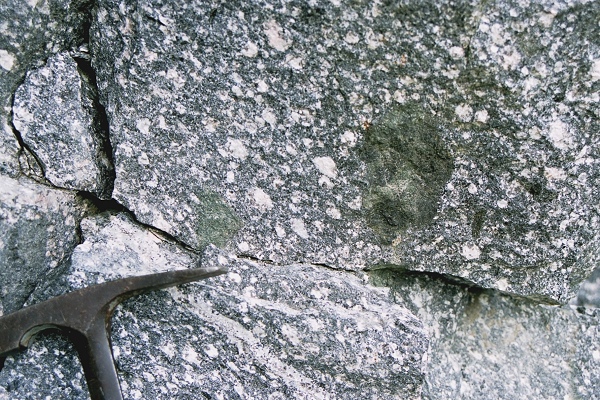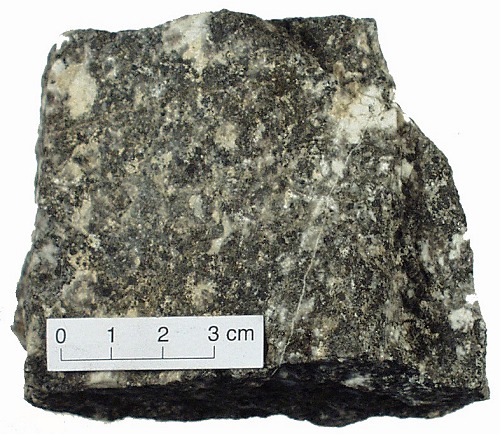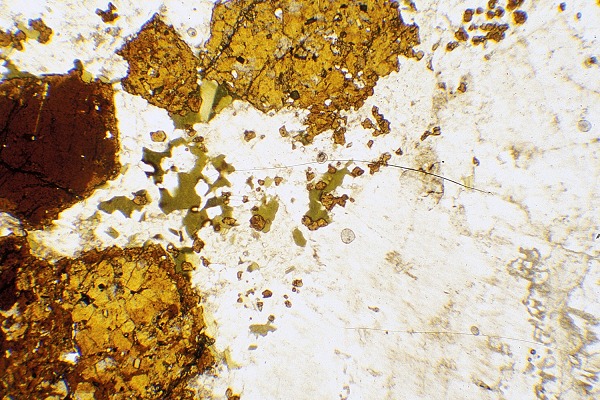
| Home | Geological History | Stratigraphy | Area map | Rock Index | About |
| Scourie | Achmelvich | Laxford | Clachtoll | Stoer | Assynt | Skiag Bridge | Glencoul | Knockan | Borralan | Ledmore |

![]() Nepheline syenite (borolanite), Loch Borralan Igneous
Complex
Nepheline syenite (borolanite), Loch Borralan Igneous
Complex
The alkaline igneous rocks mostly contain no quartz, as
all the spare silica is used up in making sodium- and
potassium-rich minerals, such as feldspar and other rarer
minerals like nepheline. This rock, with its distinctive
round white patches, contains an unusual combination of
minerals and textures that has caused geologists to give it
its own name, borolanite. This photograph is of the
borolanite in its "type locality", i.e. the place it was
first discovered and described. This is in a small quarry
at Aultivullin, near Loch Borralan.

![]() Nepheline syenite (borolanite), Loch Borralan Igneous
Complex
Nepheline syenite (borolanite), Loch Borralan Igneous
Complex
The rock is grey overall, consisting of white patches
(mostly potassium feldspar), grey material (feldspar and
nepheline) and black minerals. It is intermediate in
overall colour between a granite and a gabbro.

![]() Nepheline syenite (borolanite), Loch Borralan
Igneous Complex
Nepheline syenite (borolanite), Loch Borralan
Igneous Complex
The most distinctive dark mineral in borolanite is a brown
garnet, seen at the top and left. Some crystals are
darker-coloured than others. The smaller olive-coloured
patches are a dark mica, and the colourless material
(right) is mostly large crystals of potassium feldspar,
making up one of the white spots seen in the hand specimen.
Plane polarized light. Field of view 7 mm across.
| Scourie | Achmelvich | Laxford | Clachtoll | Stoer | Assynt | Skiag Bridge | Glencoul | Knockan | Borralan | Ledmore |
| Home | Geological History | Stratigraphy | Area map | Rock Index | About |
D.J. Waters, Department of Earth Sciences, May 2003